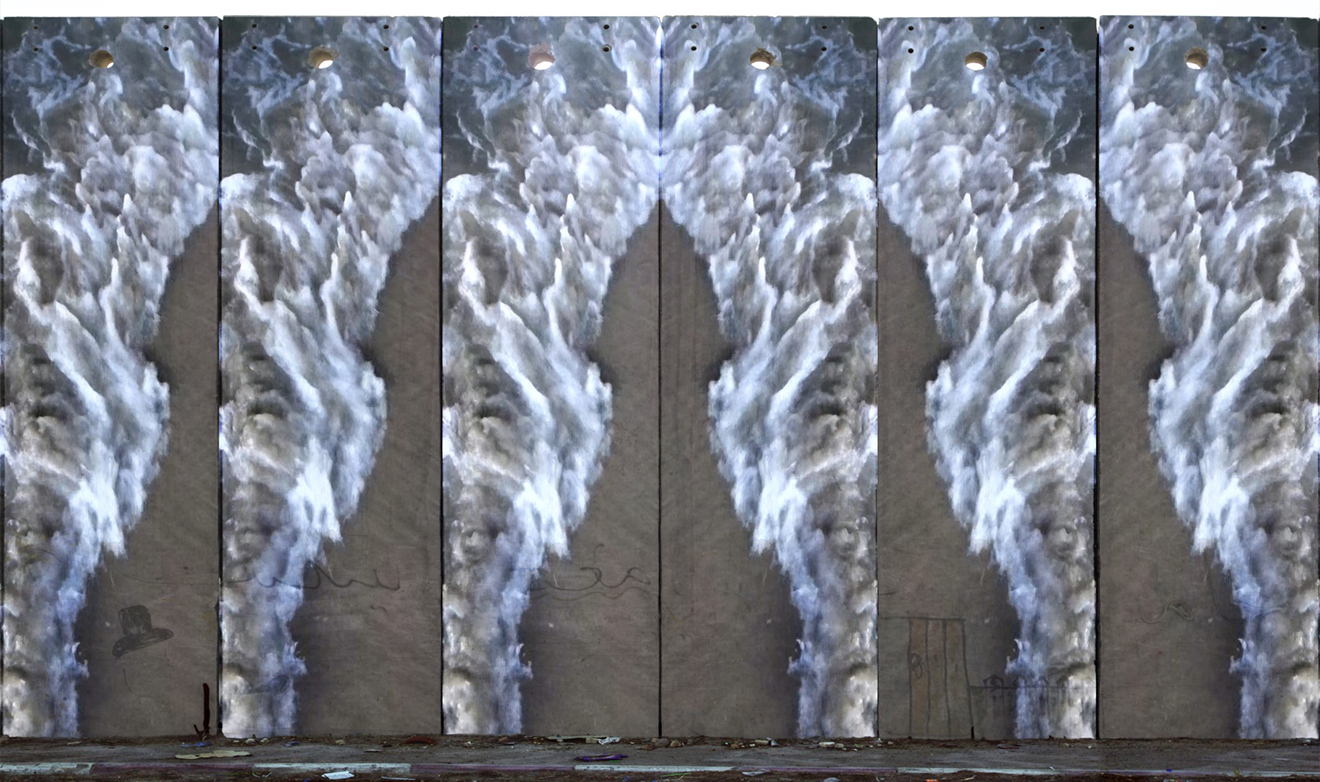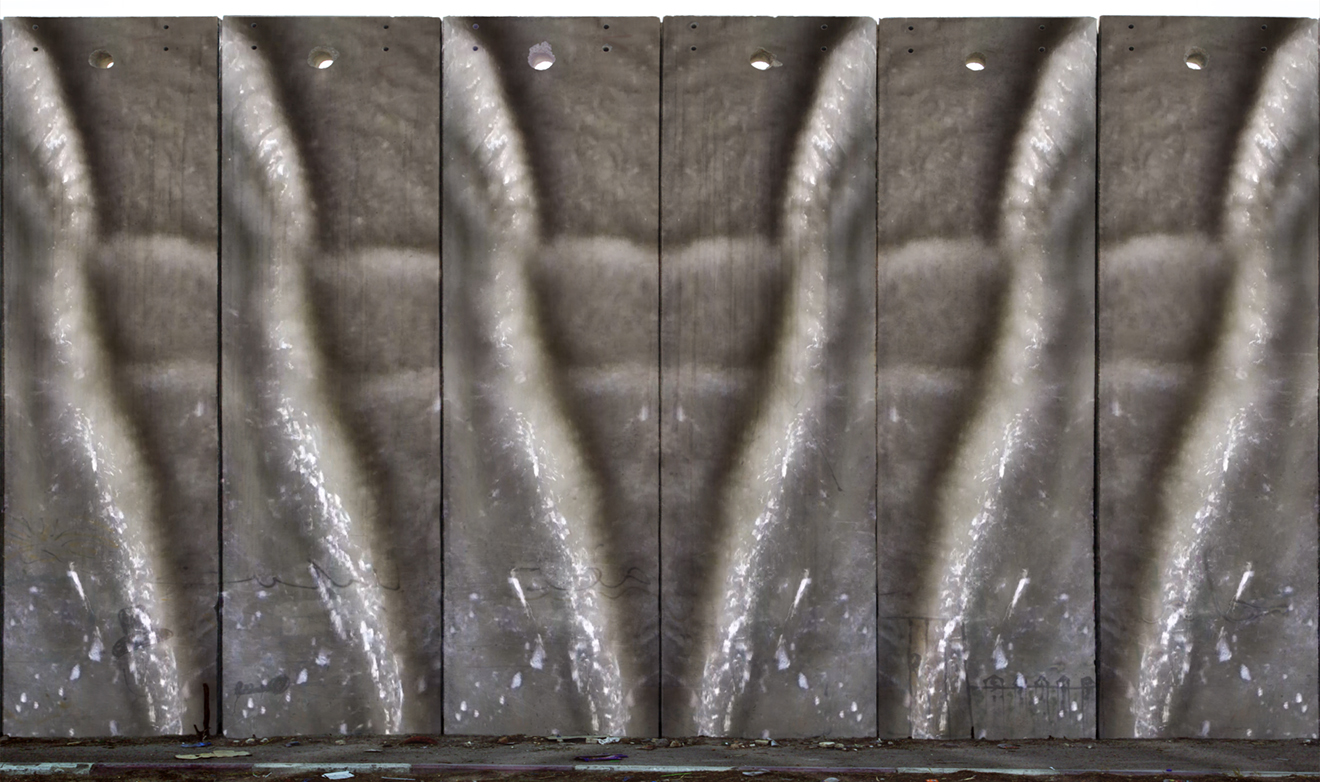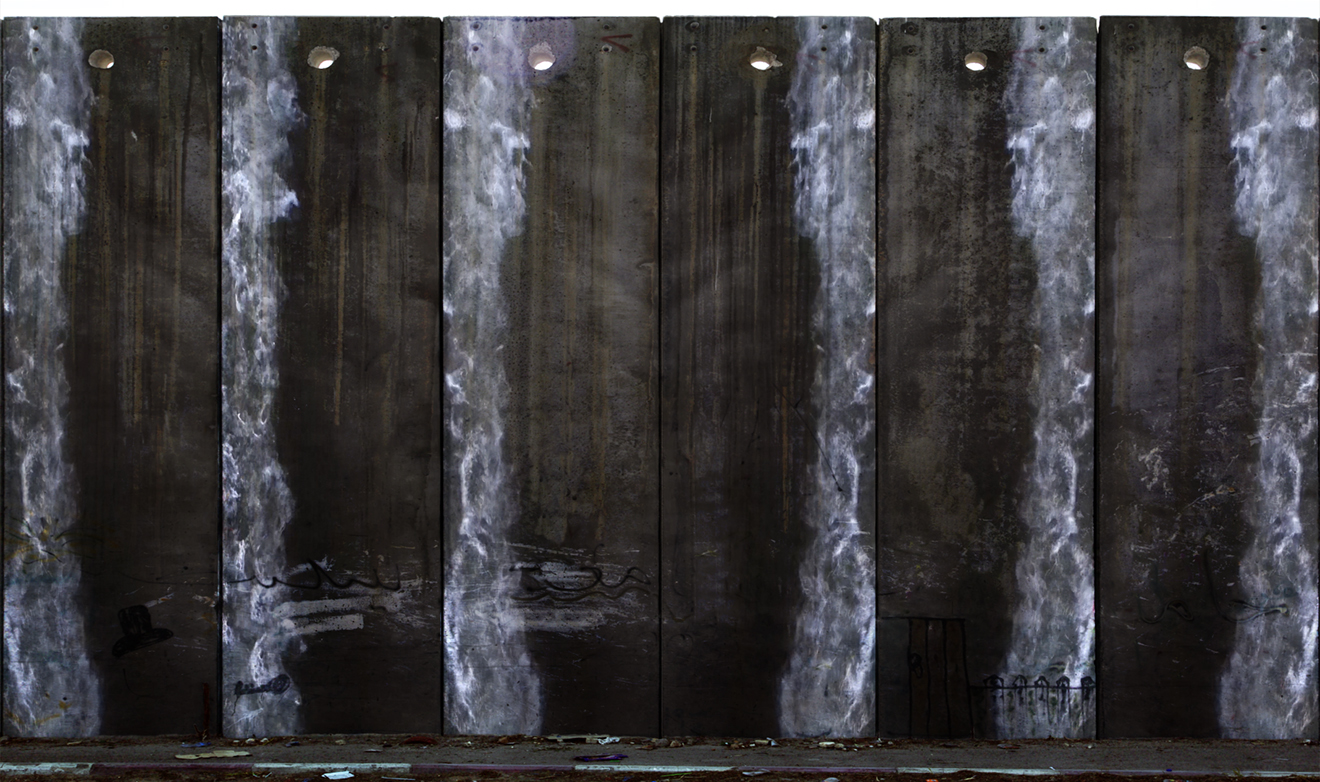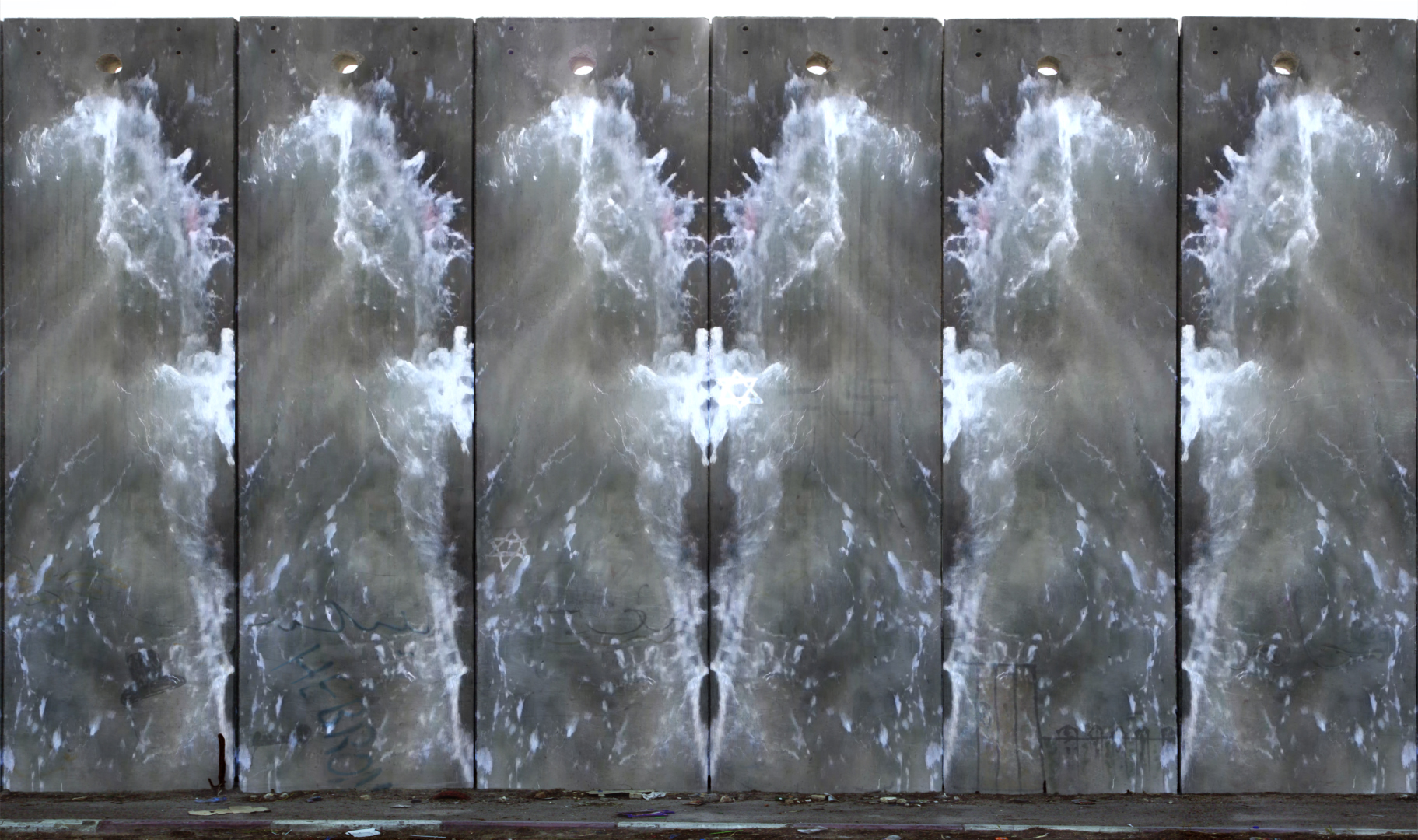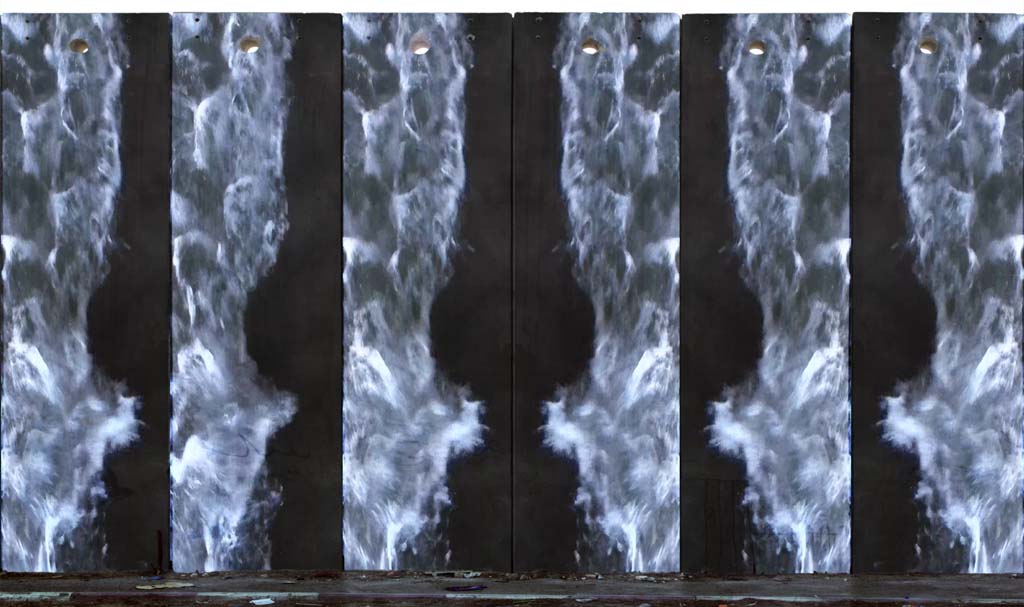QUENCH, 2014, HD video 9:34 min loop by Andrew Ellis Johnson and Susanne Slavick
Contact artist if password is needed to view entire video. Excerpt at: https://vimeo.com/115867005
The sons of Israel went through the midst of the sea on the dry land, and the waters were like a wall to them on their right hand and on their left.…
Exodus 14: 21 and 22
The sea is walking in the streets. The sea is dangling from windows and the branches of shriveled trees. The sea drops from the sky and comes into the room. Blue, white, foam, waves. I don't like the sea. I don't want the sea, because I don't see a shore, or a dove. I see in the sea nothing except the sea.
From Mahmoud Darwish, Memory for Forgetfulness
More than a million migrants and refugees made their way to Europe in 2015. The vast majority arrived by sea, fleeing homes that could no longer shelter and lands that threatened their very existence. The sea looms large in our imagination, regardless of where we live. The sea in the Old Testament offered salvation to the fleeing Israelites as Moses and the Lord parted its waters, the same waters that subsequently closed over the Egyptians in pursuit. Today in Israel, the fear of being driven into the sea has not subsided, despite the fact that it is Palestinians who are being driven from their land, creating more than 6.6 million refugees and ever shrinking homeland.*
Those Palestinians confined to the West Bank long to see the sea and dip their feet in its waters. In a line from Unfortunately, It Was Paradise by the Palestinian poet Mahmoud Darwish, the sea divides again, not between peoples chosen or reviled, but a single people: “A sea for us, a sea against us.” Yesterday, today and tomorrow, the sea is refuge and grave, a dream and disaster.
QUENCH presents a sea partitioned, with rhythmic waves ebbing and flowing, in and out of sync. Its split zones speak of division. The wall of sea and sand intermittently fades to reveal a sectioned wall of concrete with fragments of graffiti. The expanse of water and the infinity of sand paradoxically are the very construction materials that comprise this barrier that limits so many possibilities.
The near symmetry of the waves’ movement resembles a kinetic Rorschach inkblot, used in psychological testing to determine personality characteristics, emotional functioning or underlying thought disorders. QUENCH activates similar projections; it is itself a projection on a wall of a projection on a wall. It collapses the representational and the actual, but not the reality of a wall. Walls are abused to curtail autonomy, deter agency, conceal inequity, and foster fear. QUENCH becomes a screen that frames but does not contain resentment—that creates, as well as denies, desire. Like the Rorschach test, it may evoke underlying disorders—whether psychological or political—that fail to quench the thirst for sustenance, purpose, identity and justice.
*2010 statistics from IRIN, the humanitarian news and analysis service of the UN Office for the Coordination of Humanitarian Affairs
